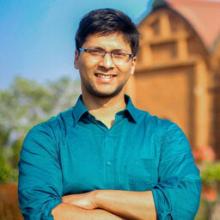Speaker: Dr. Soumen Ghosh
Postdoctoral Fellow, Pacific Northwest National
Laboratory, US
Title: “Methods for Modeling and Discovering the Next
Generation Energy Materials.”
Day and Date: Wednesday, November 02, 2022
Time: 4.00 pm.
Venue: Room no. 350, Chemistry Department
Second floor, Annex
------------------------------------------------------------------------
Abstract An effective development of sustainable technologies has to be driven by renewable energy
sources in the world. Historically, a significant portion of these sources are leveraged from solar
energy. Most of the solar cell market is still dominated by silicon-based devices which are
expensive as ultrapure silicon is required for their efficient functioning. Over the last few decades,
different organic and inorganic materials have been developed to be more cost effective than
silicon. Beyond solar cells, these new generation materials have shown their potentials in the field
of light emitting diodes, bioelectronics, quantum computing and memory devices. Along with
modern synthetic and experimental characterization techniques, different computational
techniques have played important roles in understanding the working mechanisms of many
existing materials and also in discovering new materials. However, modeling many of these new
generation materials is particularly challenging for conventional electronic structure methods due
to several factors like- unconventional electronic structures, complex photodynamic, interplay of
noncovalent interactions and role of solvents. In this talk, new computational techniques will be
presented that have the ability to model static and dynamic electronic structures of these next
generation materials accurately in a computationally cost effective way



